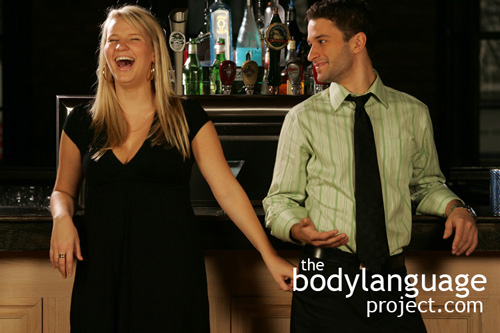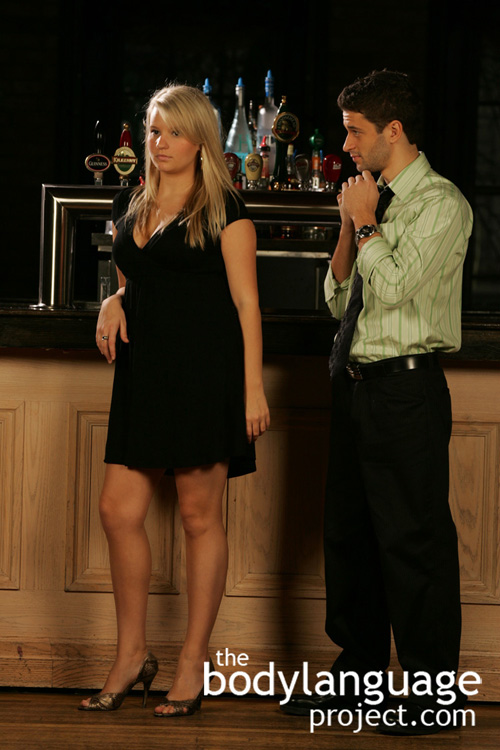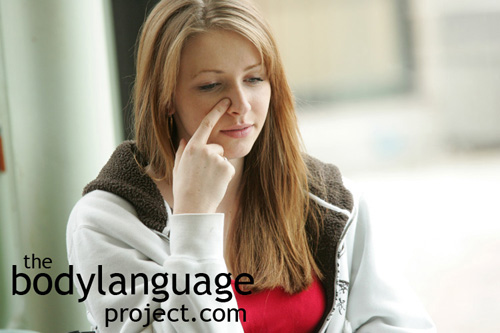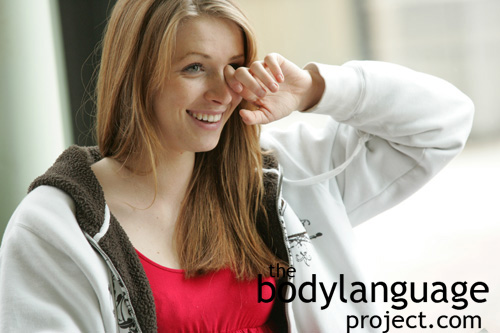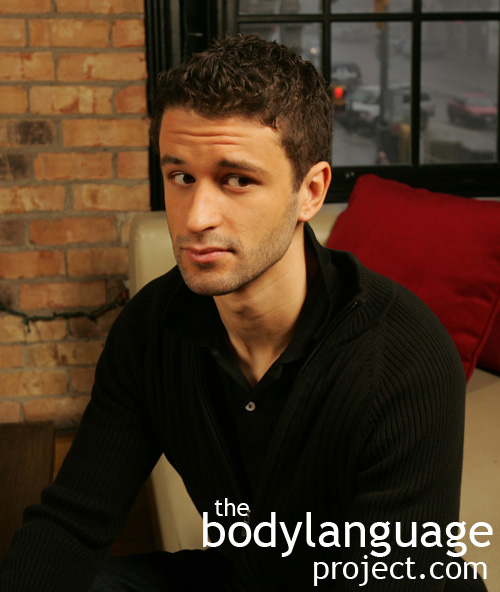Body Language of Laughter
Synonym(s): Laughing.
Description: Laughs follow a “ha-ha-ha” or “ho-ho-ho” pattern, but never “ha-ho-ha-ho”. We can see other variations though like “cha-ha-ha” or “ha-ha-ho.”
In One Sentence: Laughing is a sign of joy, happiness, and sometimes discomfort or awkwardness.
How To Use it: Laughing is well research. It has proven to be an effective way to keep the body in good spirits and even boost healing and immunity. Laughing is encouraged to build friendships and finds a welcome place in all contexts from dating, to business, and amongst friends. Use laughing to create lasting bonds and break tension.
Context: General.
Verbal Translation: “I’m so happy and surprised by what you said that I’m showing my primitive panting vocalization.”
Resources:
Bachorowski, J A ; Owren, M J. Not all laughs are alike: voiced but not unvoiced laughter readily elicits positive affect. Psychological science. 2001. 12(3): 252-7.
Dunbar, R I M ; Baron, Rebecca ; Frangou, Anna ; Pearce, Eiluned ; Van Leeuwen, Edwin J C ; Stow, Julie ; Partridge, Giselle ; Macdonald, Ian ; Barra, Vincent ; Van Vugt, Mark. Social laughter is correlated with an elevated pain threshold. Proceedings. Biological sciences / The Royal Society. 2012. 279(1731): 1161-7.
Foley, Erin ; Matheis, Robert ; Schaefer, Charles. Effect of forced laughter on mood.(Abstract). Psychological Reports. 2002 90(1): 184(1).
Grammer, K., and Eibl-Eibesfeldt, I. 1990. The ritualisation of laughter. In W. Koch (Ed.), Naturalichkeit der Sprache un der Kultur: Acta colloquii 192–214.
Grammer, Karl. Strangers meet: Laughter and nonverbal signs of interest in opposite-sex encounters. Journal of Nonverbal Behavior. 1990. 14(4): 209-236.
Hall, Jeffrey A. and Chong Xing. The Verbal and Nonverbal Correlates of the Five Flirting Styles. Journal of Nonverbal Behavior. 2015. 39:41–68. DOI 10.1007/s10919-014-0199-8
http://bodylanguageproject.com/articles/first-12-minutes-flirting-using-nonverbal-communication-study-reveals-26-body-language-cues-attraction/
Kawakami, Kiyobumi; Takai-Kawakami, Kiyoko; Tomonaga, Masaki; Suzuki, Juri; Kusaka, Tomiyo; Okai, Takashi. 2006. Origins of smile and laughter: a preliminary study. Early Human Development. 82 (1): 61.
Keltner, Dacher; Bonanno, George A. 1997. A study of laughter and dissociation: Distinct correlates of laughter and smiling during bereavement. Journal of Personality and Social Psychology. 73(4): 687-702.
Kipper, Silke ; Todt, Dietmar. The Role of Rhythm and Pitch in the Evaluation of Human Laughter. Journal of Nonverbal Behavior. 2003. 27(4): 255-272.
MacDonald, C., 2004. A Chuckle a Day Keeps the Doctor Away: Therapeutic Humor & Laughter. Journal of Psychosocial Nursing and Mental Health Services 42(3):18-25.
Martin, Rod A. 2001. Humor, laughter, and physical health: Methodological issues and research findings Psychological Bulletin. 127(4): 504-519.
Moore, Monica. Courtship Signaling and Adolescents: Girls Just Wanna Have Fun. Journal of Sex Research. 1995. 32(4): 319-328.
http://bodylanguageproject.com/articles/girls-just-want-to-have-fun-the-origins-of-courtship-cues-in-girls-and-women/
Neuhoff, Charles C ; Schaefer, Charles. Effects of laughing, smiling, and howling on mood. Psychological reports. 2002 91(3 Pt 2): 1079-80.
Owren, Michael J.; Bachorowski, Jo-Anne 2003. Reconsidering the evolution of nonlinguistic communication: the case of laughter Journal of Nonverbal Behavior. 27(3): 183-200.
Panksepp, J., Burgdorf, J., “Laughing” rats and the evolutionary antecedents of human joy? Physiology & Behavior (2003) 79: 533-547.
Provine, Robert R.. 2000. The laughing species. Natural History. 109(10): 72-76.
Provine, Robert R. 2000. Laugh and the world laughs with you. Scientific American. 283(6): 108-110.
Provine, Robert R. Laughing, grooming, and pub science. Trends in Cognitive Sciences. 2013. 17(1): 9-10.
Provine, R. R. 1992. Contagious laughter: Laughter is a sufficient stimulus for laughs and smiles. Bulletin of the Psychonomic Society 30: 1- 4.
Provine, R. R. 1993. Laughter punctuates speech: Linguistic, social and gender contexts of laughter. Ethology 95: 291-298.
Provine, R. R., and K. R. Fischer. 1989. Laughing, smiling, and talking: Relation to sleeping and social context in humans. Ethology 83: 295-305.
Provine, R. R., and Y. L. Yong. 1991. Laughter: A stereotyped human vocalization. Ethology 89: 115-124.
Provine, R.R. Contagious yawning and laughing: Everyday imitation and mirror-like behavior. Behavioral and Brain Science. 28: 142.
Priest, RF; Thein, MT. 2003. Humor appreciation in marriage: Spousal similarity, assortative mating, and disaffection. Humor-international journal of humor research, 16(1): 63-78.
Ritter, Jan ; Brück, Carolin ; Jacob, Heike ; Wildgruber, Dirk ; Kreifelts, Benjamin. Laughter perception in social anxiety. Journal of Psychiatric Research. 2015. 60: 178-184.
Szameitat, Diana P. ; Kreifelts, Benjamin ; Alter, Kai ; Szameitat, André J. ; Sterr, Annette ; Grodd, Wolfgang ; Wildgruber, Dirk. It is not always tickling: Distinct cerebral responses during perception of different laughter types. NeuroImage. 2010. 53(4): 1264-1271.
Szameitat, Diana P. ; Alter, Kai ; Szameitat, André J. ; Darwin, Chris J. ; Wildgruber, Dirk ; Dietrich, Susanne ; Sterr, Annette Phelps, Elizabeth A. (editor). Differentiation of Emotions in Laughter at the Behavioral Level. Emotion. 2009. 9(3): 397-405.
Szameitat, Dianap. ; Darwin, Chrisj. ; Wildgruber, Dirk ; Alter, Kai ; Szameitat, Andréj. Acoustic correlates of emotional dimensions in laughter: Arousal, dominance, and valence. Cognition & Emotion. 2011. 25(4): 599-611.
Sturman, Edward D. Invluntary Subordination and Its Relation to Personality, Mood,
and Submissive Behavior. Psychological Assessment. 2011. 23(1): 262-276 DOI: 10.1037/a0021499
http://bodylanguageproject.com/articles/nonverbal-submission-men-women-depression-critical-examination-use-disuse-submission/
Vettin, Julia ; Todt, Dietmar. Laughter in Conversation: Features of Occurrence and Acoustic Structure. Journal of Nonverbal Behavior. 2004. 28(2): 93-115.
Variant: Giggling is another form of laughter that is more characteristic of children being silly.
Cue In Action: After a few beers it was all jokes and laughter at the party, most of the time no one really knew what caused the laughing spells.
Meaning and/or Motivation: Some researchers pin laughs as a modification of the fear response or as a warning that danger was near. By that same theory, we laugh because our brains are scared or frightened which is why we don’t laugh when we hear a joke for the second time and have predicted its outcome. Laughter usually comes about due to humour and helps clarify emotional context (by defining amusement) between people. Laughter is a way to heal as it releases positive hormones. It is also a way people can share and therefore bond with one another. Laughter in a nonverbal context shows that people are thinking alike and are in agreement and trying to build trust and friendship.
Subordinate people will laugh simply to appease more dominant people, and dominant people exclude themselves from the laugh so as to maintain their dominance. Controlling laugher therefore, can help control our dominance or submission to others, as well as show our acceptance or rejection of others. For example, a polite laugh shows that we are at least “onboard” with a person even though we might not totally agree that what they have said is in fact funny.
Laughter is a form of mirroring and communicates mutual liking and well-being. It can also be used to reduce the harshness of comments or even to take comments back. Humour is an innate vocalization that fosters a sense of community and can help in learning and in creativity. It helps break down walls between different people and can act like a social lubricant to bind people together. Laughter is thirty times more likely to happen in a social setting rather than alone and studies have shown that people don’t really seem to care if the laugh is fake or real, they still tend to like people more when they laugh. Laughing helps us build bonds. Even fake laughs help because at least it shows that a person is trying to fit in.
Cue Cluster: Laughter might be accompanied by social touching, smiling, loose body that lacks negative tension, plenty of “up” non-verbal cues such as arms up, shoulders and head up, toes pointed up, bodies leaning in with engagement and so forth.
Body Language Category: Appease, Enthusiasm (nonverbal), Excited, Fearful body language, Happiness body language, Indicator of interest (IoI), Masked emotions, Nervous body language, Open body language, Nonthreatening body language, Rapport or rapport building, Stressful body language, Surprised body language, Universal gestures.

